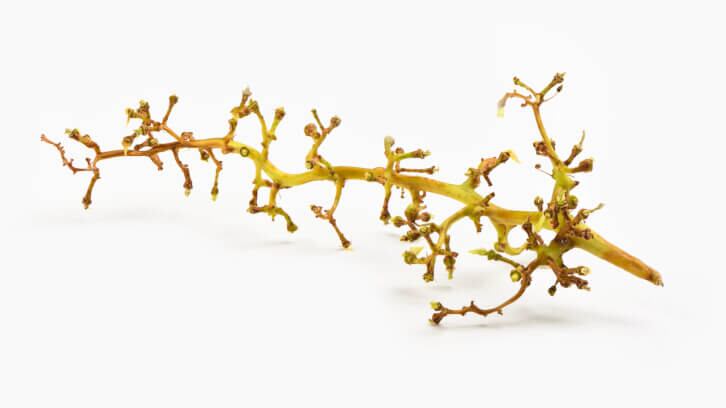Writing in the International Journal of Cosmetic Science, researchers report their analysis of bioactive compounds in fermented grape stem extracts and the addition of the ferments to cosmetic creams.
The highest antioxidant and phenolic compound content was found on the twentieth day of fermentation. For the addition of the fermented extract to creams, the authors found a positive effect on hydration and skin pH.
This study is said to be the first to evaluate fermentation of grape stem extracts using Scoby consortium and how it might improve skin care properties.
Bioactive compounds in fermented grape stem extracts
The grape stem extracts were fermented for 10 and 20 days, and an unfermented control extract was included as well. The extracts were all analyzed for antioxidant and chemical and biologically active substances.
The pH of the stem extracts decreased from 4.6 for the control to 2.9 after 10 days of fermentation, then 2.5 after 20 days. Total acidity increased from 0.71% control to 2.79% after 10 days fermentation and 4.72% after 20 days fermentation.
For glucuronic acid, which can stimulate the synthesis of hyaluronic acids and therefore influence cell regeneration, the levels increased sixfold after 10 days and that increase was maintained through the end of the experiment. Fermented hyaluronic acid penetrates the skin surface deeper — 10 times so — than regular HA.
L-asorbic acid — also known as vitamin c — increased sixfold after 10 days of fermentation and showed a slightly lower value after 20 days. Vitamin C, a powerful antioxidant, can treat and prevent photoaging.
Major phenolic compounds in the unfermented stems extract were gallic acid, quince acid and catechin. After 10 days of fermentation, these increased fivefold but after 20 days, there was no significant difference.
The total amino acid content decreased during fermentation when compared to the control, down by 30% after 10 days.
Extract benefits when used within cosmetic cream
“Due to their content of simple chemical compounds of low molecular weight, plant ferments are a source of bioavailable active substances that have a high rate of penetration into the deeper layers of the skin,” the authors write.
To test the effect of the fermented and unfermented grape stem extract within a cream, factors such as hydration, skin pH and UV protection were assessed. Each extract was added to the same cream, and the base cream was analyzed as well. “Emulsions containing grape stems extract and ferments showed a more favourable moisturizing effect compared to the base cream...” The cream with the highest moisturizing effect contained the 20-day fermented extract.
The impact of the different extracts within the cream’s on skin pH was to lower it. “The results indicate that ferments have a positive effect on skin pH, lowering it.,” the authors wrote. This is noteworthy as a balanced pH keeps skin healthy and protects the microbiome.
Lastly, the UV protection of the cream formulations was studied. The cream with the 20-day fermented extract had 30-40% strong absorbance of UVA and HEV radiation than the 10-day fermented extract cream. “Plants are a source of natural substances that have the properties to absorb UV radiation and are considered natural UV filters to protecting the skin from UV radiation,” they added.
Source: International Journal of Cosmetic Science
Published online ahead of print, doi: 10.1111/ics.12891
“Kombucha fermentation as a modern way of processing vineyard by-products into cosmetic raw materials”
Authors: N. Stanek-Wandzel, et al.

